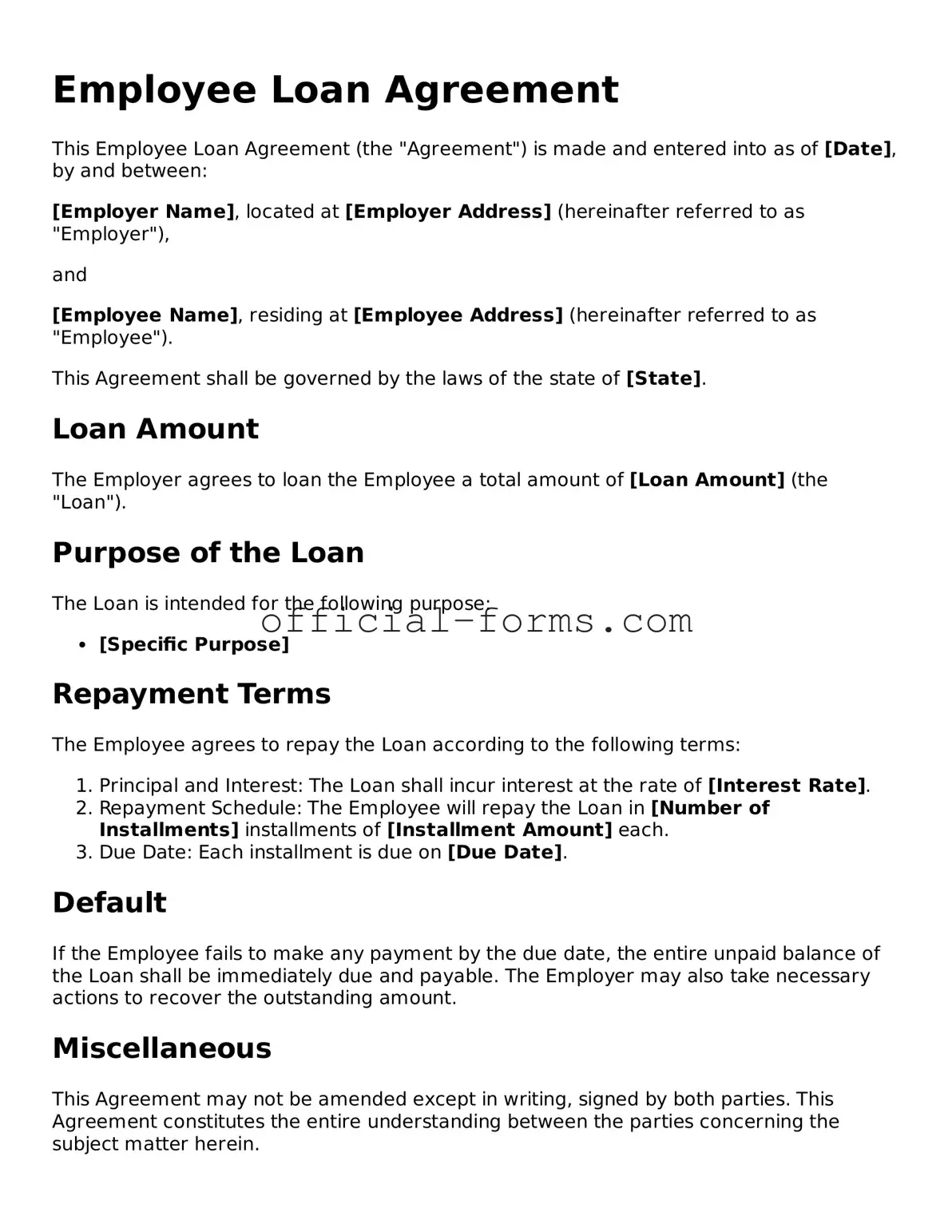Filling out an Employee Loan Agreement form can be straightforward, yet many individuals make common mistakes that can complicate the process. One frequent error is providing incomplete personal information. When applicants neglect to include their full name, address, or contact details, it can lead to delays in processing the loan. Ensuring that all personal information is accurate and complete is essential for smooth communication.
Another mistake involves misunderstanding the loan amount. Some employees request a sum that exceeds the allowable limit set by the employer. This can result in automatic rejection of the application. It is crucial to review the company’s loan policy and adhere to the specified limits when completing the form.
Miscalculating repayment terms is also a common issue. Employees may either underestimate or overestimate how long they will need to repay the loan. This can lead to confusion later on regarding monthly payment amounts. Clearly understanding the repayment schedule and aligning it with personal financial capabilities is vital.
In addition, failing to read the terms and conditions of the loan can create problems. Some individuals skip this step, leading to unexpected obligations or fees. Taking the time to thoroughly review these details ensures that the borrower is fully informed about their responsibilities.
Another frequent oversight is neglecting to provide necessary documentation. Often, supporting documents such as proof of income or identification are required. Without these, the application may be deemed incomplete. Gathering all required paperwork beforehand can expedite the approval process.
Some employees also forget to sign the agreement. A missing signature can render the entire application invalid. It is important to double-check that all necessary signatures are present before submitting the form.
Additionally, individuals may fail to keep a copy of the submitted form. This can lead to difficulties in tracking the application status or resolving any discrepancies later. Retaining a copy serves as a reference and can be helpful in future discussions with HR.
Another common mistake is overlooking the importance of providing accurate financial information. If an employee misrepresents their financial situation, it can lead to serious consequences. Honesty in disclosing income and other financial obligations is essential for a fair assessment of the loan application.
Lastly, some applicants do not follow up on their application status. After submission, it is wise to check in with HR or the loan officer to ensure that the application is being processed. This proactive approach can help identify any issues early on and facilitate a smoother loan approval process.
